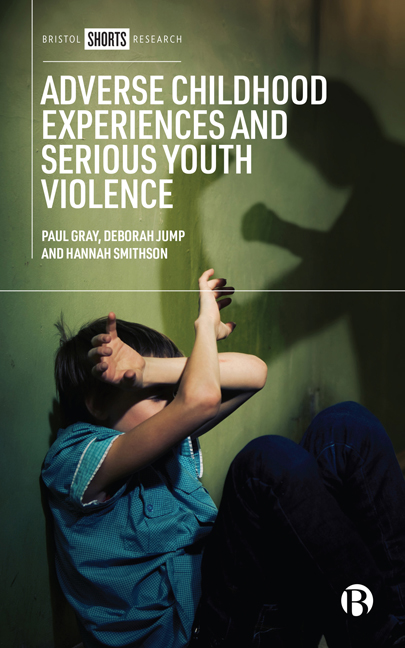Book contents
- Frontmatter
- Contents
- List of Figures and Tables
- Acknowledgements
- One Introduction
- Two Review of the Literature
- Three Researching Adverse Childhood Experiences and Trauma
- Four Serious Youth Violence
- Five Adverse Childhood Experiences
- Six The Relationship between Adverse Childhood Experiences and Serious Youth Violence
- Seven Trauma-informed Practice
- Eight Conclusions
- Notes
- References
- Index
Six - The Relationship between Adverse Childhood Experiences and Serious Youth Violence
Published online by Cambridge University Press: 18 January 2024
- Frontmatter
- Contents
- List of Figures and Tables
- Acknowledgements
- One Introduction
- Two Review of the Literature
- Three Researching Adverse Childhood Experiences and Trauma
- Four Serious Youth Violence
- Five Adverse Childhood Experiences
- Six The Relationship between Adverse Childhood Experiences and Serious Youth Violence
- Seven Trauma-informed Practice
- Eight Conclusions
- Notes
- References
- Index
Summary
When you’re looking at serious youth violence … you’ve got to understand where it comes from, how it comes about, and how it manifests.
(Youth justice worker [YJW] 2)The preceding two chapters have outlined the prevalence and nature of adverse childhood experiences (ACEs) and serious youth violence (SYV) among justice-involved young people in Manchester. This chapter now moves on to investigate the complex relationship between ACEs and SYV. It looks at the impact of ACEs on a young person's mind and body, as well as their identity formation. It finishes with a discussion of the relevance of attachment theory to an investigation of the relationship between ACEs and SYV.
Before doing this, however, it is important to note that not everyone who experiences ACEs has a negative outcome (McCartan 2020). While exposure to childhood adversity significantly increases the likelihood of offending later in life, the link between ACEs and later violent behaviour is far from certain, since a large portion of abused and neglected young people do not go on to a life of crime (Widom 1989). Nonetheless, ACEs have been found to be strongly associated with a range of ‘problematic behaviours’ including aggression, violence and criminal behaviour (Liddle et al 2016).
Impact on the mind
To properly comprehend the relationship between ACEs and the violent behaviour of justice-involved young people, it is important to understand the impact of ACEs on a psychological level. Herman (2015) was the first to use the term ‘complex trauma’ to describe a constellation of symptoms that occur following chronic, repetitive or prolonged exposure to traumatic experiences. Building upon theories of post-traumatic stress disorder (PTSD), Herman describes how ‘complex trauma’ can produce similar effects and symptoms to PTSD, including for example affect dysregulation, dissociation and identity disturbance. These symptoms are commonly over-represented in those who have experienced, for example, domestic violence or childhood abuse (Herman 2015). The Eleventh Revision of The International Classification of Diseases (World Health Organization 2022) describes complex trauma as having three main elements: re-experiencing the traumatic event/s in the present, avoidance of these intrusions and an excessive sense of current threat.
- Type
- Chapter
- Information
- Adverse Childhood Experiences and Serious Youth Violence , pp. 69 - 83Publisher: Bristol University PressPrint publication year: 2023



